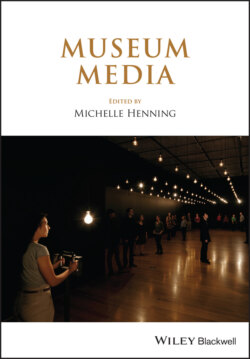Читать книгу Museum Media - Группа авторов - Страница 56
Video testimonies: Communicative memory as cultural memory
ОглавлениеThe Egyptologist Jan Assmann, in what has by now become a classic of memory studies, Cultural Memory and Early Civilization: Writing, Remembrance, and Political Imagination (2011, first published in German in 1992), differentiates between two modes of collectively remembering the past: communicative memory and cultural memory. Communicative memory is “based exclusively on everyday communications” and “characterized by a high degree of non-specialization, reciprocity of roles, thematic instability, and disorganization” (J. Assmann and Czaplicka 1995, 126). Communicative memory concerns events in a recent past that some of the participants of the conversations can still remember. It lasts at the most 80 to 100 years, or three to four generations. Cultural memory on the other hand, “has its fixed points; its horizon does not change with the passing of time. These fixed points are fateful events of the past, whose memory is maintained through cultural formation (texts, rites, monuments) and institutional communication (recitation, practice, observance)” (J. Assmann and Czaplicka 1995, 129). Cultural memory concerns events in a distant past that are reconstructed according to a contemporary context (J. Assmann and Czaplicka 1995, 130). Both modes of remembering the past are linked by a time of transition, a floating gap (J. Assmann 1992, 48).
The Anglicist Aleida Assmann has further developed Jan Assmann’s theory and divided cultural memory into storage memory and functional memory (2006, 54–58). Storage memory refers to those carriers of cultural memory that are stored in archives, magazines, libraries, and so on, but are not actively used at the present moment. Functional memory, on the other hand, concerns those carriers that are of direct relevance for a contemporary memorial culture. Aleida Assmann uses the art museum as an example to illustrate the difference between functional memory and storage memory, but any historically oriented museum would have done really. Generally, only a fraction of the objects in a museum’s storerooms, the museum’s storage memory, are actually exhibited in the galleries, the museum’s functional memory. Carriers of cultural memory that have once been part of storage memory can of course be rediscovered and become functional memory, while carriers of functional memory, after some time in the limelight, can end up in museum storerooms, archives, or libraries.
For Jan and Aleida Assmann, the transition between communicative memory and cultural memory is rather schematic. Although Jan Assmann accounts for a “floating gap,” this time of transition appears only at the end of the time of communicative memory and the beginning of its transformation into cultural memory. The theory does not account for the coexistence of cultural and communicative memory – or for the use of communicative memory as cultural memory. I argue that exactly the latter is happening right now: the musealization of video testimonies is an endeavor to turn communicative memory itself into cultural memory and to save it from oblivion.
